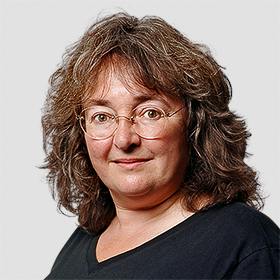Two elderly ladies sit side by side, one English, one French, one smartly dressed, one wearing clothes that were already very old fashioned by the late 1920s when the photograph was taken. One, her hand reassuringly on the other, looks slightly towards the camera: the other is wrapped in her own thoughts, not reacting to the camera, her companion or the world.
The photograph is the last known image of the sculptor Camille Claudel, once a renowned artist, a dazzling beauty, and lover of the most famous sculptor of the day, Auguste Rodin. Her career is celebrated in a new museum opening on Sunday in the small French town of Nogent-sur-Seine, which holds the largest collection of her work in the world.
By the time the photograph was taken in 1929, Claudel had already spent years in a French mental hospital. She died there in 1943, and was buried in a common grave. Her companion was the English artist Jessie Lipscomb, who had shared a studio in Paris and lodged with Claudel’s mother when they were young women in the 1880s, together carving out daringly independent careers as artists. Claudel stayed with Lipscomb’s family in Peterborough and they holidayed on the Isle of Wight but they eventually fell out, as Claudel did with almost everyone close to her.
Lipscomb, and her husband William Elborne who took the photographs, were among a handful of visitors to Claudel in the decades she vanished from the world. Claudel’s brother Paul, who became a poet and diplomat and was once her beloved companion and the subject of several loving portraits on display in the museum, is believed to have visited 12 times in 30 years. Her mother, who had committed her to the asylum in 1911 within months of the death of Claudel’s stern but affectionate father, never came.
Claudel and her family lived for just four years in Nogent-sur-Seine, a small French town south-east of Paris, but crucially it was where, as a 12-year-old, she first began sculpting in the local clay.
Apart from the good clay, the small hardworking town with its large mills on the river – and now a nuclear power station, clearly visible from the top floor of the museum – has no obvious attractions for an artist, although Gustave Flaubert loved it and set his novel A Sentimental Education there. However, in the 19th century, it became home to several famous sculptors.
Claudel’s father sent her work to their artist neighbour, Alfred Boucher, to rule on whether his daughter had talent. Boucher was certain she had, and went on to support, encourage and teach her – and, crucially, introduce her to Rodin. Her relationship with Rodin soon developed into a full-blown affair, but she was also his studio assistant and an artist in her own right whose work he respected: the redeveloped Rodin museum in Paris includes a room of her work. When their relationship disintegrated because she was determined to be seen as more than just his protege, the effect on her was calamitous.
By 1911, Claudel was living as a recluse in a studio in Paris, systematically destroying much of her work, convinced that what she termed “Rodin’s gang” would break in and steal her ideas. Her mother had her committed to an asylum at Val-de-Marne. She and the other patients were moved for safety to another asylum in the first world war, and there she died in 1943.
“It is a tragic story, but it is hard for us to judge now,” curator Cécile Bertran said. “Modern experts have looked at her records and she really was very ill.”
Bertran said Claudel was offered art materials in the asylum, but refused, still convinced that Rodin might somehow get at them.
The town has paid for the museum, an elegantly plain building designed by Adelfo Scaranello architects wrapped around the shell of the old Claudel home. Project architect Martin Quelen said there was no question of restoring the interiors of Claudel’s day, which had been rebuilt many times, leaving no evidence of their use. Instead a series of handsome plain daylit galleries have large windows, giving views into the streets she knew.
The museum also hold towering works by Boucher, who left his collection to the town, and works by the artist friends he encouraged to do likewise. Claudel is now far more famous than any of them. The plan for a new museum arose out of an exhibition of her work in 2003, which in a town of 6,000 people attracted more than 40,000 visitors.
The first object in the museum is a monumental bronze sculpture of a writhing couple, which to Bertran is a poignant symbol of Claudel’s life. It was first exhibited as a plaster model, but she never won the commission which would allow her to have it cast in bronze. Long after her death, when it was finally cast, the plaster had been badly damaged by its decades in storage, as lost to the world as the artist had been.











